The empty mass of an aircraft is recorded in ? [ Exam pilot ]
Question 70-1 : The weighing schedule and is amended to take account of changes due to modifications of the aircraft the loading manifest it differs from dry operating mass by the value of the 'useful load' the weighing schedule if changes occur due to modifications the aircraft must be re weighed always the loading manifest it differs from the zero fuel mass by the value of the 'traffic load'
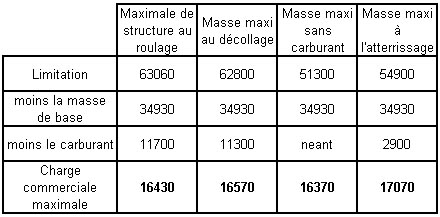 The weighing schedule and is amended to take account of changes due to modifications of the aircraft.
The weighing schedule and is amended to take account of changes due to modifications of the aircraft. The maximum quantity of fuel that can be loaded into an aircraft's tanks is ?
Question 70-2 : 1196 kg 1437 kg 2302 kg 1916 kg
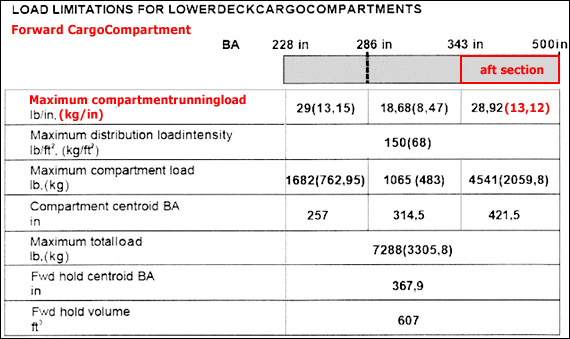 1196 kg.
1196 kg. The maximum quantity of fuel that can be loaded into an aircraft's tanks is ?
Question 70-3 : 1738 kg 2785 kg 2098 kg 1798 kg
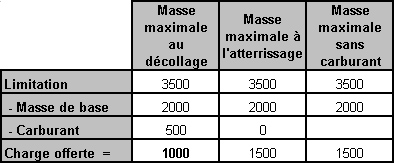 1738 kg.
1738 kg. The basic empty mass is 4960 kg the dry operating mass is 5220 kg and the zero ?
Question 70-4 : 2410 kg 2670 kg 1590 kg 820 kg
The basic empty mass is 4800 kg the dry operating mass is 5050 kg and the zero ?
Question 70-5 : 2960 kg 3210 kg 1800 kg 1160 kg
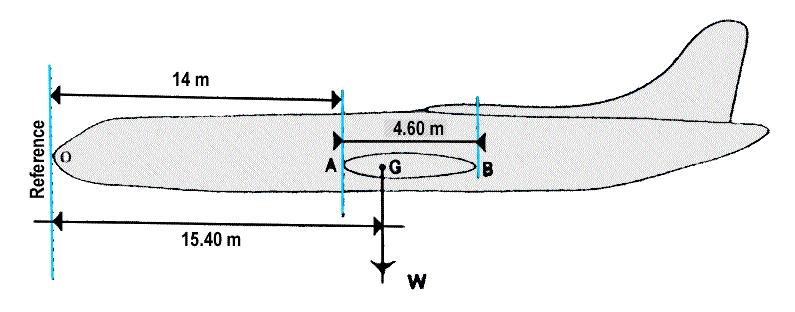 2960 kg.
2960 kg. Longitudinal cg location is normally expressed ?
Question 70-6 : As a percentage of the mac from its leading edge as a percentage of the mac from its trailing edge with respect to the neutral point with respect to the centre of pressure
Given .basic empty mass bem 1 200 kg.balance arm of bem 3 0 m.centre of ?
Question 70-7 : 22 % of mac 29 % of mac 34 % of mac 17 % of mac
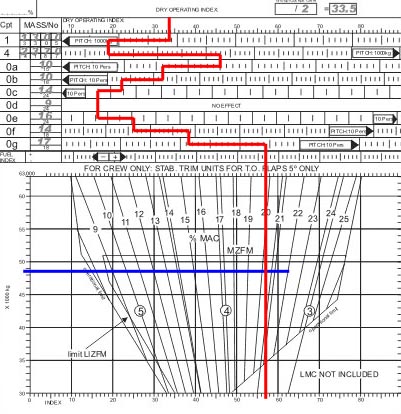 22 % of mac.
22 % of mac. Given the following data .distance from datum to centre of gravity 12 53 ?
Question 70-8 : 36 3% mac 47 0% mac 63 4% mac 23 1% mac
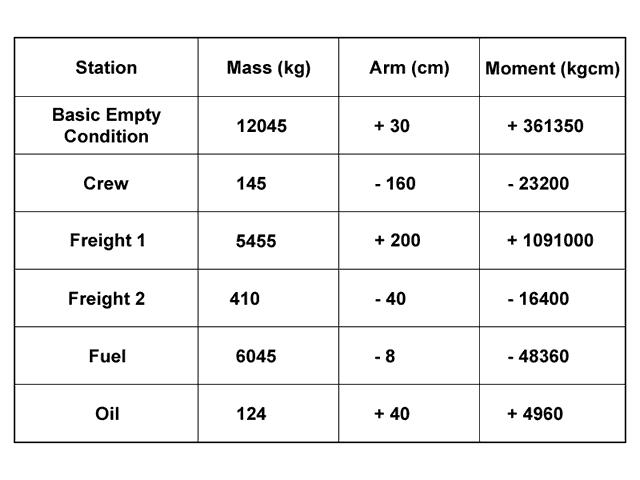 36.3% mac.
36.3% mac. At reference to determine the dry operating index doi for a dom of 35000kg and ?
Question 70-9 : Doi 40 doi 35 doi 45 doi 50
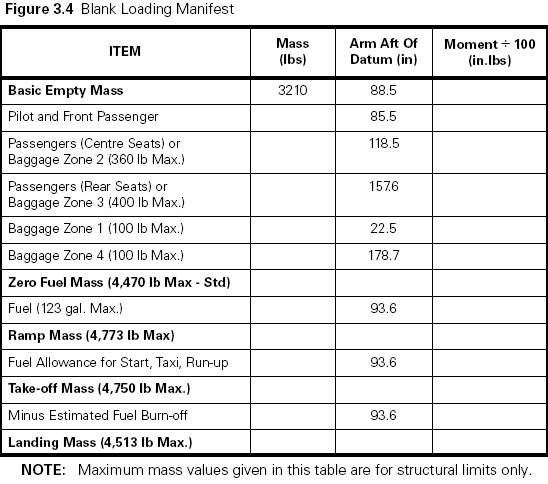 Doi 40.
Doi 40. Which of the following combinations of compartment centroid and maximum load is ?
Question 70-10 : 835 5 in and 3062 kg 421 5 in and 3087 kg 835 5 in and 4187 kg 421 5 in and 2059 lb
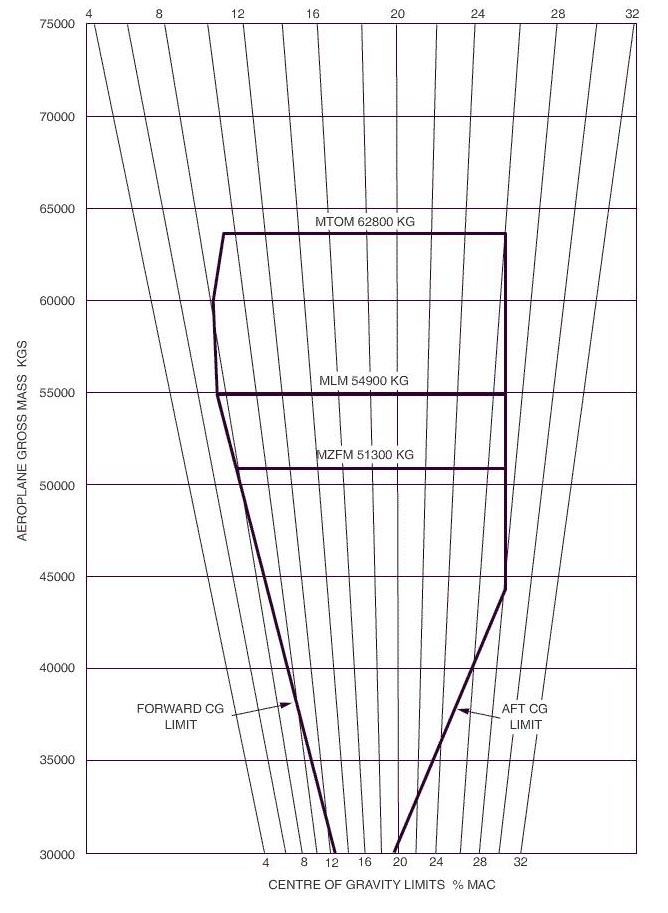 835.5 in and 3062 kg.
835.5 in and 3062 kg. Given the following data calculate the cg as a %mac mean aerodynamic cord when ?
Question 70-11 : 27 5% 25% 29 25% 30 5%
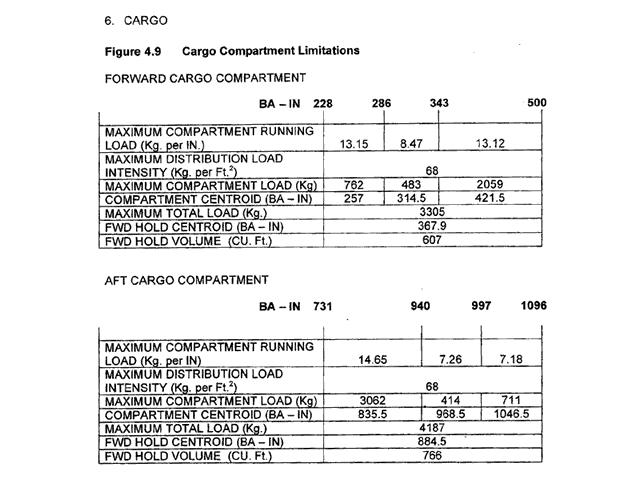 27.5%.
27.5%. What are the standard masses used for crew ?
Question 70-12 : 85 kg for flight crew 75 kg cabin crew including hand baggage 85 kg for flight crew 75 kg cabin crew not including hand baggage 88 kg for flight crew 76 kg cabin crew not including baggage 88 kg for flight crew 76 kg cabin crew including baggage
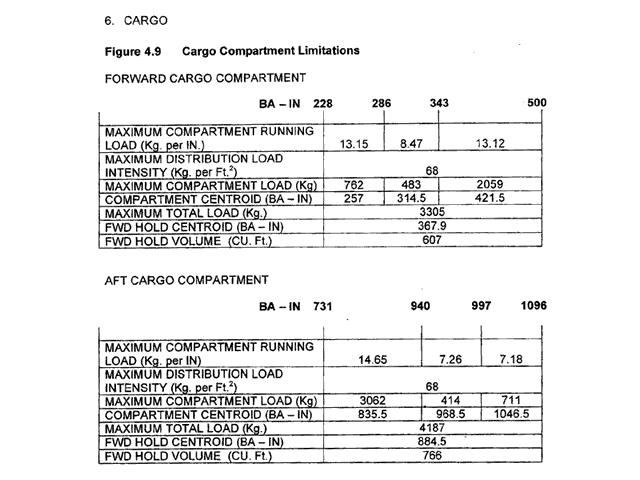 85 kg for flight crew, 75 kg cabin crew, including hand baggage.
85 kg for flight crew, 75 kg cabin crew, including hand baggage. For the medium range twin jet the datum point is located . 235 ?
Question 70-13 : 540 inches forward of the front spar 540 cm forward of the front spar on the nose of the aeroplane at the leading edge of the mean aerodynamic chord mac
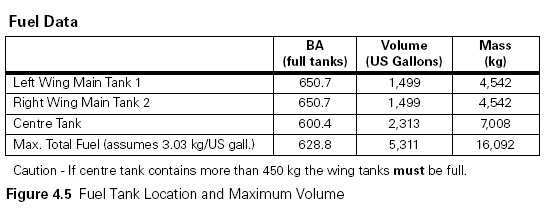 540 inches forward of the front spar.
540 inches forward of the front spar. The chemical fluids used to charge the aircraft toilets are counted as ?
Question 70-14 : Part of the variable load part of the payload part of the basic empty mass part of the under load
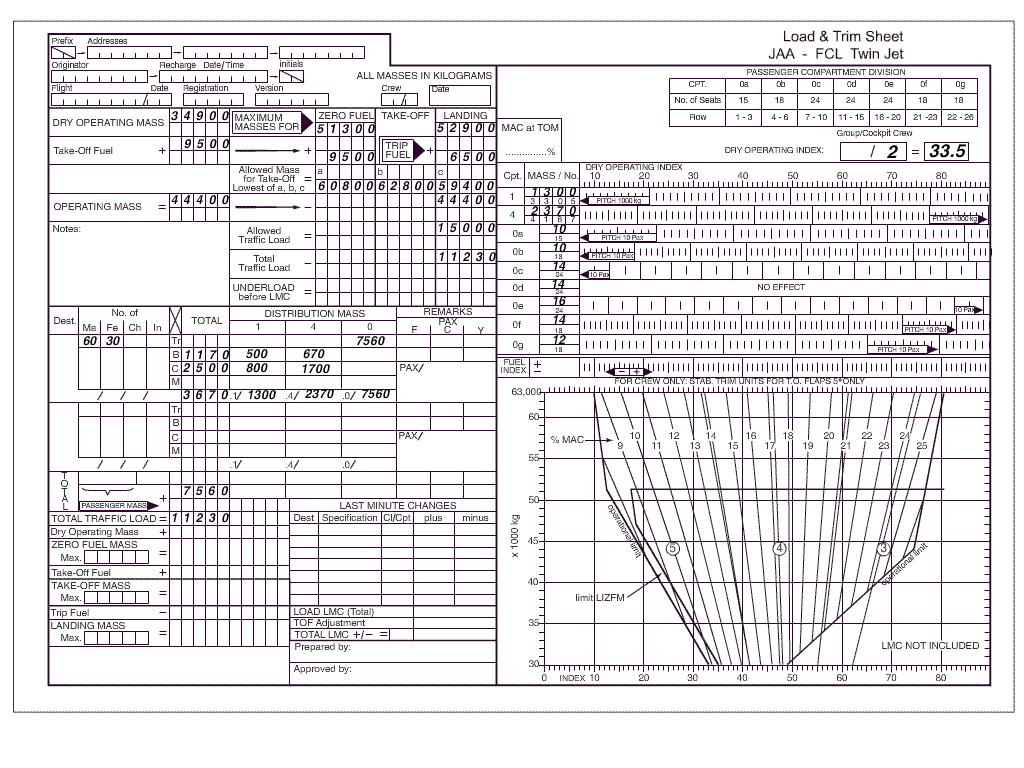 Part of the variable load.
Part of the variable load. For this question use annex ecqb 031 054 v2015 01 .calculate the basic empty ?
Question 70-15 : 968 4 kg and 179 7 cm 968 4 kg and 1707000 n cm 9500 kg and 1707000 n cm 9500 kg and 179 7 cm
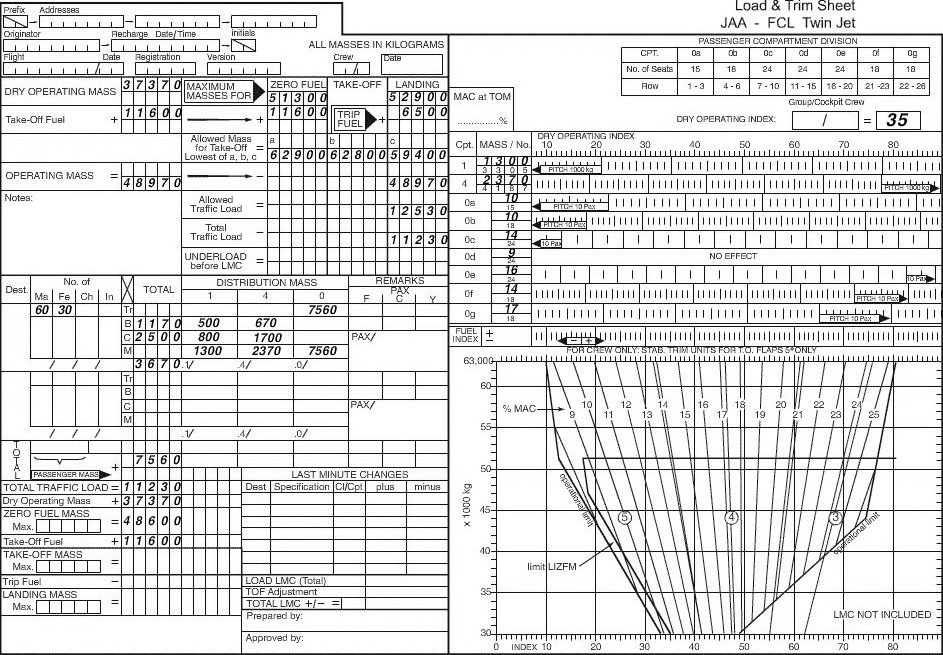 968.4 kg and 179.7 cm
968.4 kg and 179.7 cm For this question use annex ecqb 031 057 v2015 05 .using the loading manifest ?
Question 70-16 : 3210 lbs 3292 lbs 4460 lbs 3410 lbs
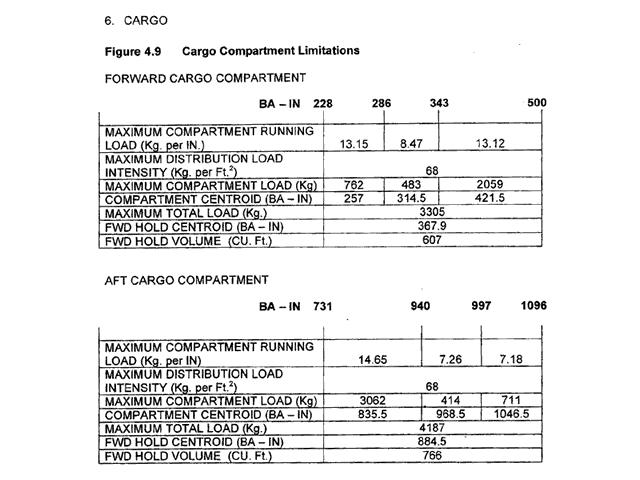 3210 lbs.
3210 lbs. The bem of an aircraft is the basic empty weight of an aircraft without crew ?
Question 70-17 : Weighing schedule at the last date of weighing aircraft manual and includes unusable fuel and liquids in closed systems loading manual and includes unusable fuel operations manual and includes engine oil
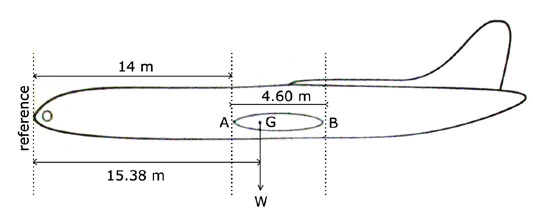 Weighing schedule at the last date of weighing.
Weighing schedule at the last date of weighing. The mass of an aircraft is 2000 kg and 400 kg of freight is added to a hold 2 m ?
Question 70-18 : 0 33 m aft 0 4 m forward 0 4 m aft 0 33 m forward
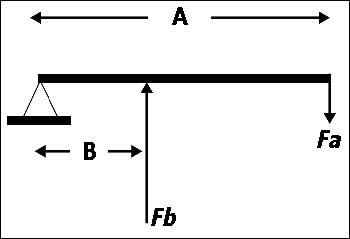 0.33 m aft.
0.33 m aft. Once the mass and balance documentation has been signed prior to flight ?
Question 70-19 : Acceptable last minute change to the load must be documented small load changes are allowed without recalculation no load alterations are allowed acceptable last minute change to the load may be documented
Using the loadsheet on the annex determine the underload and the difference ?
Question 70-20 : 3770 kg and the difference is 7170 kg 3670 kg and the difference is 3770 kg 3770 kg and the difference is 3770 kg 4770 kg and the difference is 7170 kg
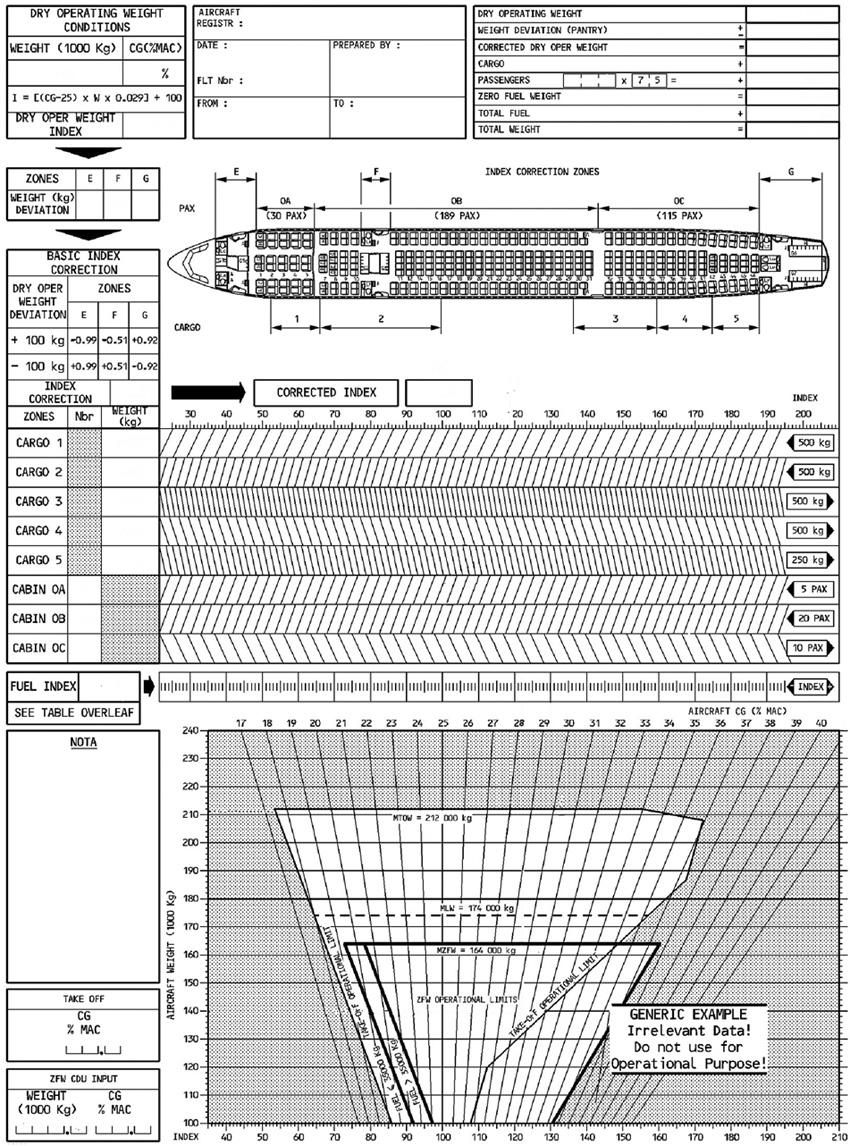 3770 kg and the difference is 7170 kg.
3770 kg and the difference is 7170 kg. A location in the aircraft which is identified by a number designating its ?
Question 70-21 : Station moment mac index
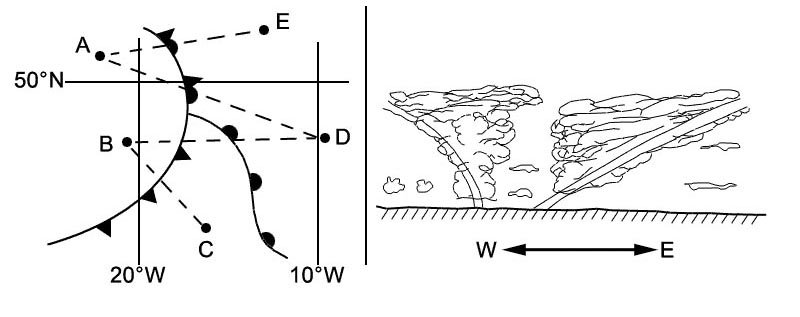 Station.
Station. The centre of gravity of a body is that point ?
Question 70-22 : Through which the sum of the forces of all masses of the body is considered to act where the sum of the external forces is equal to zero which is always used as datum when computing moments where the sum of the moments from the external forces acting on the body is equal to zero
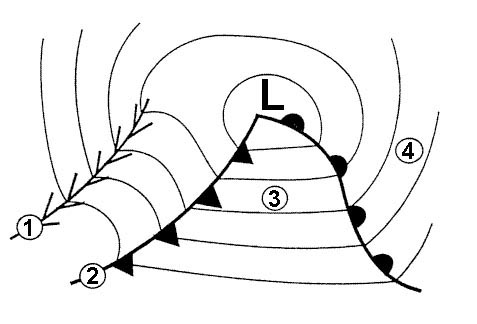 Through which the sum of the forces of all masses of the body is considered to act.
Through which the sum of the forces of all masses of the body is considered to act. Assuming gross mass altitude and airspeed remain unchanged movement of the ?
Question 70-23 : Increased cruise range higher stall speed lower optimum cruising speed reduced maximum cruise range
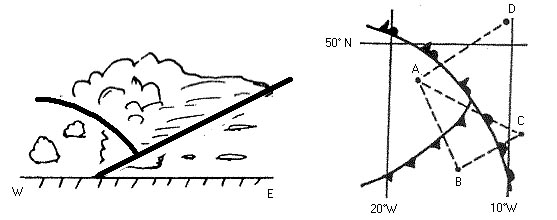 Increased cruise range.
Increased cruise range. Moment balance arms are measured from a specific point to the body station at ?
Question 70-24 : The datum the focal point the axis the centre of gravity of the aircraft
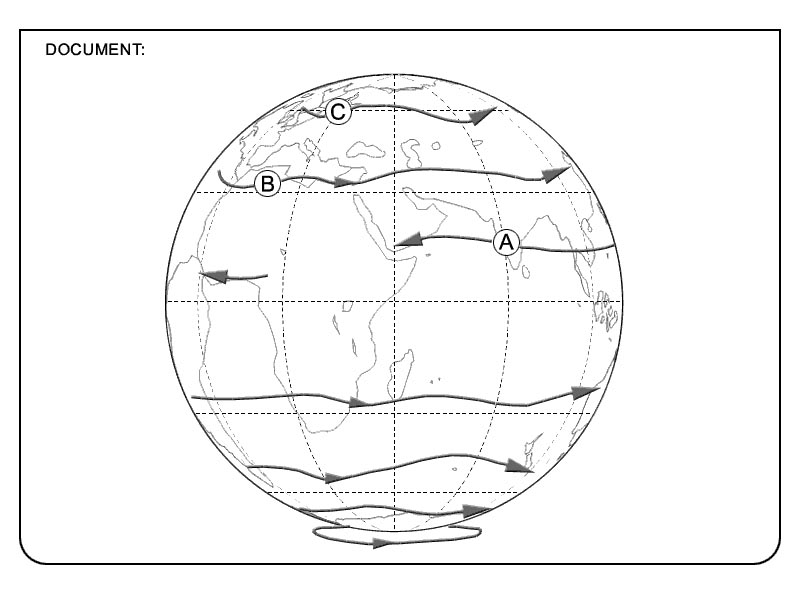 The datum.
The datum. The centre of gravity of an aircraft is that point through which the total mass ?
Question 70-25 : Parallel to the gravity vector always parallel to the aircraft's vertical axis at right angles to the flight path governed by the distribution of the mass within the aircraft
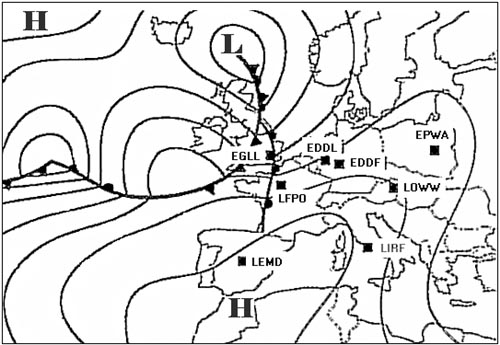 Parallel to the gravity vector.
Parallel to the gravity vector. When an aircraft is stationary on the ground its total weight will act ?
Question 70-26 : Through its centre of gravity through its centre of pressure through the main wheels of its undercarriage assembly through a point defined as the datum point
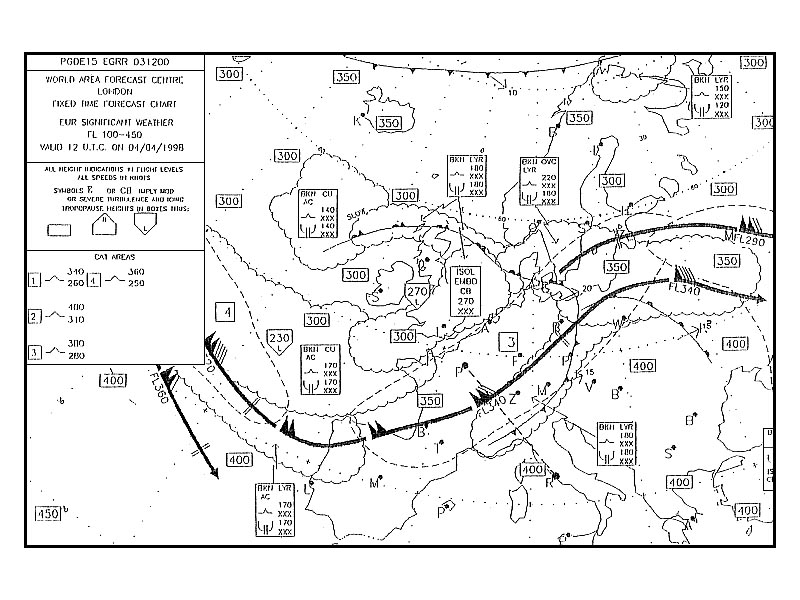 Through its centre of gravity.
Through its centre of gravity. The weight of an aircraft which is in level non accelerated flight is said to ?
Question 70-27 : Vertically through the centre of gravity vertically through the centre of pressure vertically through the datum point always along the vertical axis of the aircraft
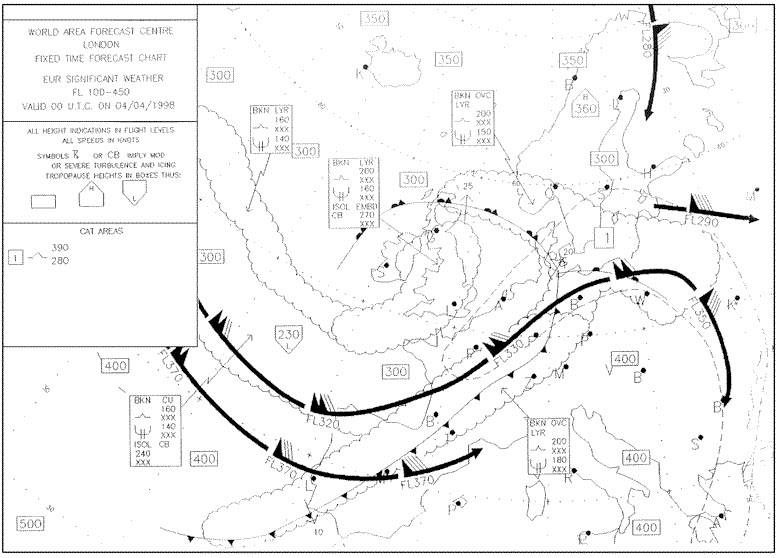 Vertically through the centre of gravity.
Vertically through the centre of gravity. The distance from the datum to the centre of gravity of a mass is known as ?
Question 70-28 : The moment arm or balance arm the index the force the moment
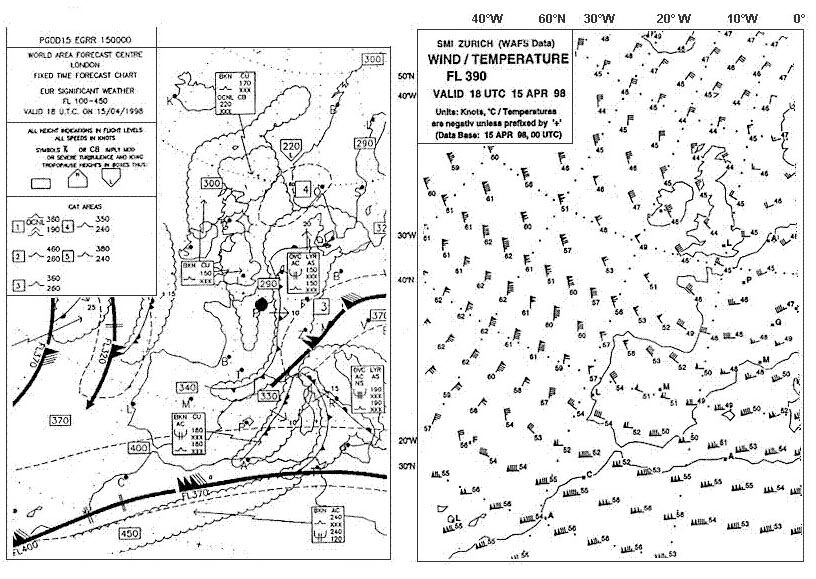 The moment arm or balance arm.
The moment arm or balance arm. During take off you notice that for a given elevator input the aeroplane ?
Question 70-29 : The centre of gravity may be towards the aft limit the aeroplane is overloaded the centre of gravity is too far forward the centre of pressure is aft of the centre of gravity
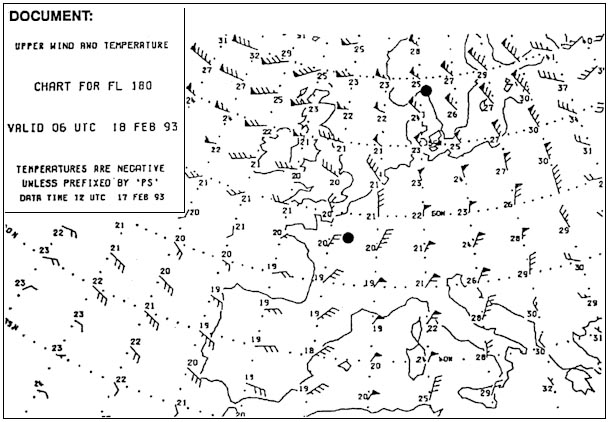 The centre of gravity may be towards the aft limit.
The centre of gravity may be towards the aft limit. The mass displacement caused by landing gear extension ?
Question 70-30 : Creates a longitudinal moment in the direction pitch up or pitch down determined by the type of landing gear creates a pitch up longitudinal moment does not create a longitudinal moment creates a pitch down longitudinal moment
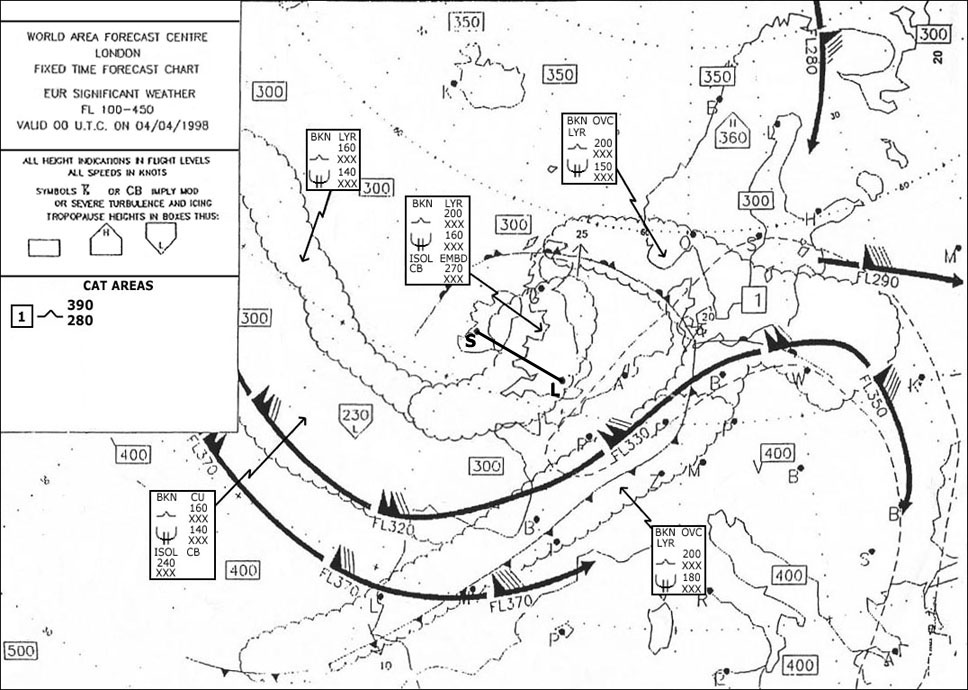 Creates a longitudinal moment in the direction (pitch-up or pitch-down) determined by the type of landing gear.
Creates a longitudinal moment in the direction (pitch-up or pitch-down) determined by the type of landing gear. The datum used for balance calculations is chosen on the longitudinal axis of ?
Question 70-31 : But not necessarily between the nose and the tail of the aircraft and necessarily situated between the nose and the tail of the aircraft between the leading edge and trailing edge of the wing or at rotor mast for an helicopter and always at the fire wall level
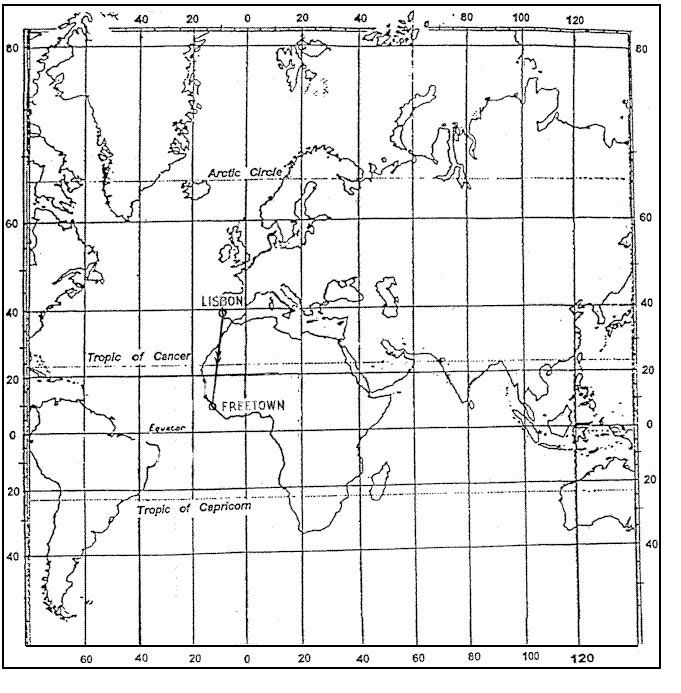 But not necessarily between the nose and the tail of the aircraft.
But not necessarily between the nose and the tail of the aircraft. The centre of gravity is the ?
Question 70-32 : Point where all the aircraft mass is considered to be concentrated centre of thrust along the longitudinal axis in relation to a datum line focus along the longitudinal axis in relation to a datum line neutral point along the longitudinal axis in relation to a datum line
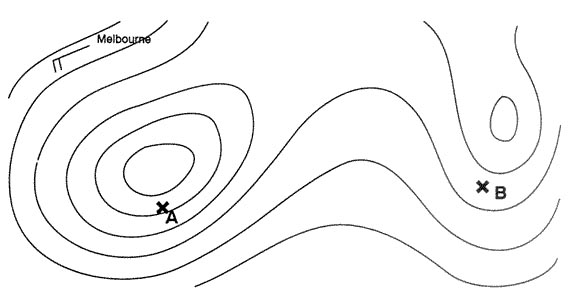 Point where all the aircraft mass is considered to be concentrated.
Point where all the aircraft mass is considered to be concentrated. For the purpose of aeroplane mass and balance calculations the datum point is ?
Question 70-33 : A fixed point from which all balance arms are measured it may be located anywhere on the aeroplane's longitudinal axis or on the extensions to that axis the point through which the sum of the mass values of the aeroplane and its contents is assumed to act vertically a point near the centre of the aeroplane it moves longitudinally as masses are added forward and aft of its location a variable point that is dependent on the load distribution for its location from which all balance arms are measured
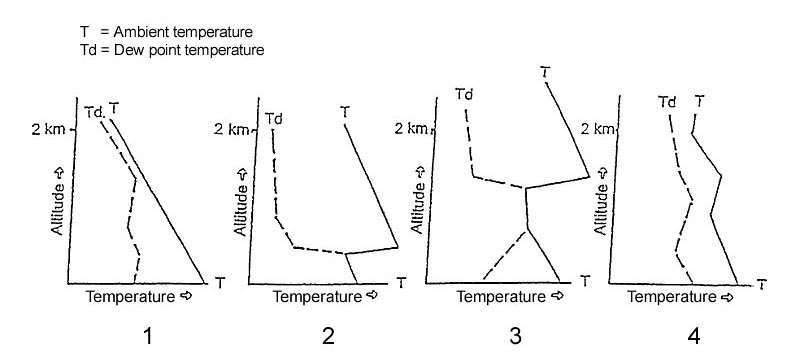 A fixed point from which all balance arms are measured. it may be located anywhere on the aeroplane's longitudinal axis or on the extensions to that axis.
A fixed point from which all balance arms are measured. it may be located anywhere on the aeroplane's longitudinal axis or on the extensions to that axis. In calculations with respect to the position of the centre of gravity a ?
Question 70-34 : A reference plane which is chosen by the aircraft manufacturer its position is given in the aircraft flight or loading manual calculated from the loading manifest an arbitrary reference chosen by the pilot which can be located anywhere on the aircraft calculated from the data derived from the weighing procedure carried out on the aircraft after any major modification
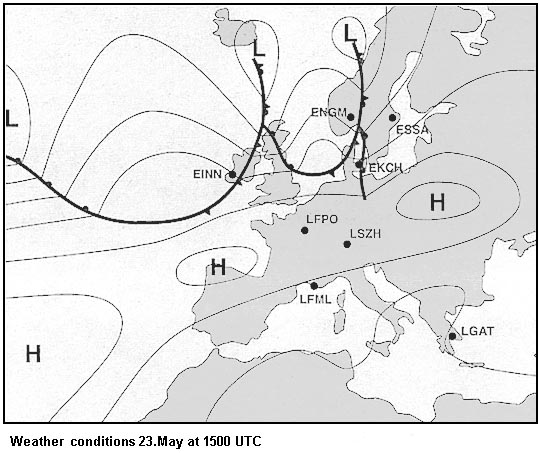 A reference plane which is chosen by the aircraft manufacturer. its position is given in the aircraft flight or loading manual.
A reference plane which is chosen by the aircraft manufacturer. its position is given in the aircraft flight or loading manual. The mass of an item multiplied by it's distance from the datum is it's ?
Question 70-35 : Moment centre of gravity moment arm force
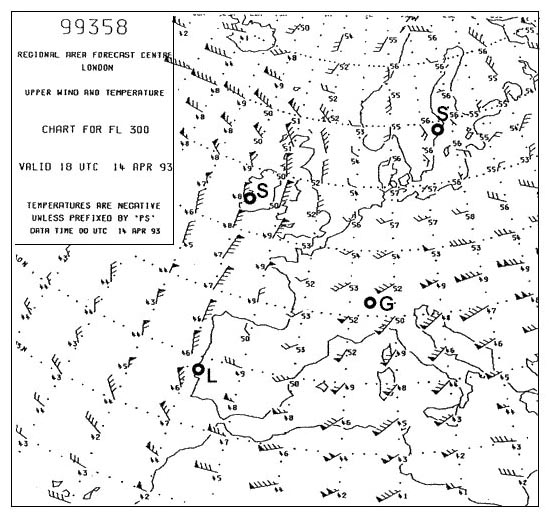 Moment.
Moment. The moment for an item is ?
Question 70-36 : The mass of the item multiplied by it's distance from the datum the mass of the item divided by it's distance from the datum the distance the item is from the datum divided by it's mass the square of the distance the item is from the datum divided by it's mass
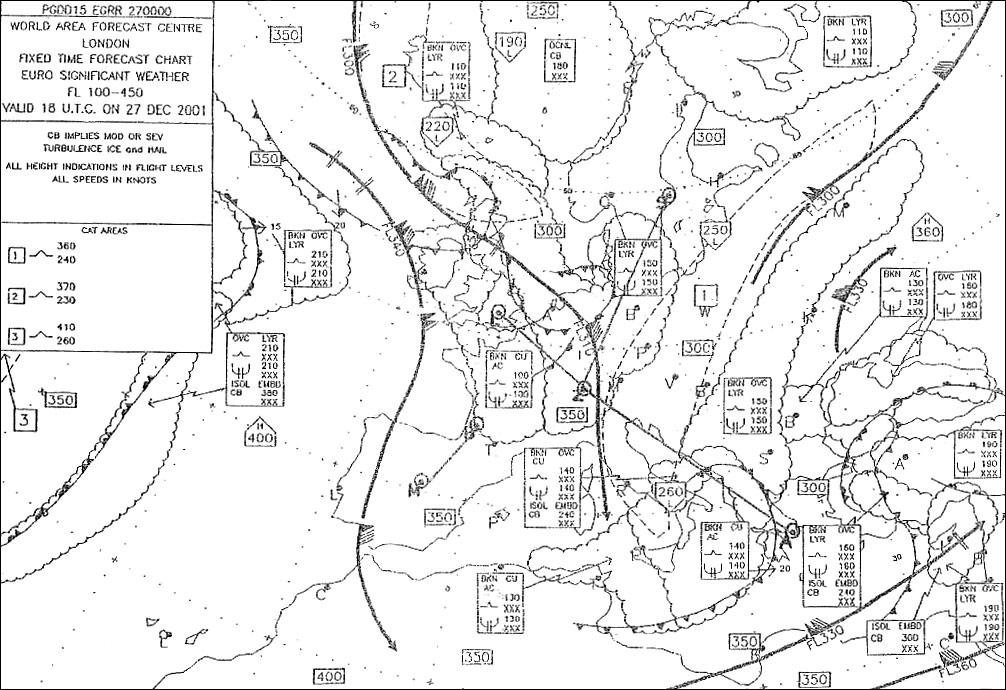 The mass of the item multiplied by it's distance from the datum.
The mass of the item multiplied by it's distance from the datum. The reference about which centre of gravity moments are taken is the ?
Question 70-37 : Datum centre of pressure centre of mass chord line
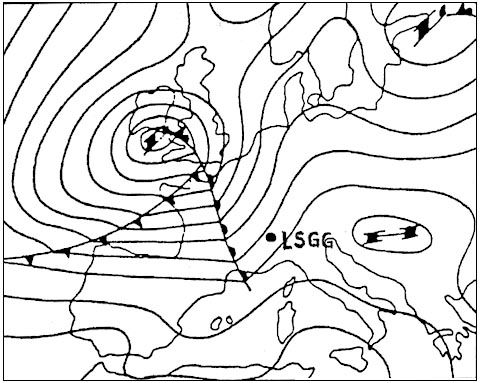 Datum.
Datum. The datum is a reference from which all moment balance arms are measured its ?
Question 70-38 : At a convenient point which may not physically be on the aircraft at or near the forward limit of the centre of gravity at or near the focal point of the aircraft axis system at or near the natural balance point of the empty aircraft
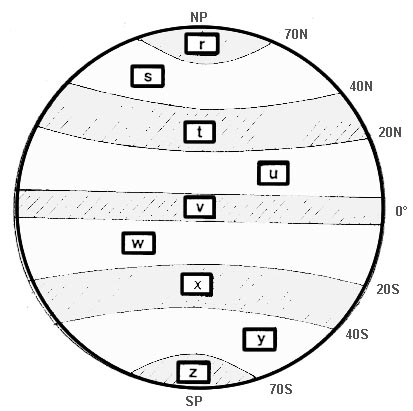 At a convenient point which may not physically be on the aircraft.
At a convenient point which may not physically be on the aircraft. A load placed aft of the datum ?
Question 70-39 : Has a positive arm and therefore generates a positive moment has a negative arm and therefore generates a negative moment and mass has a negative arm and therefore generates a negative moment has a positive arm and therefore generates a positive moment but negative mass
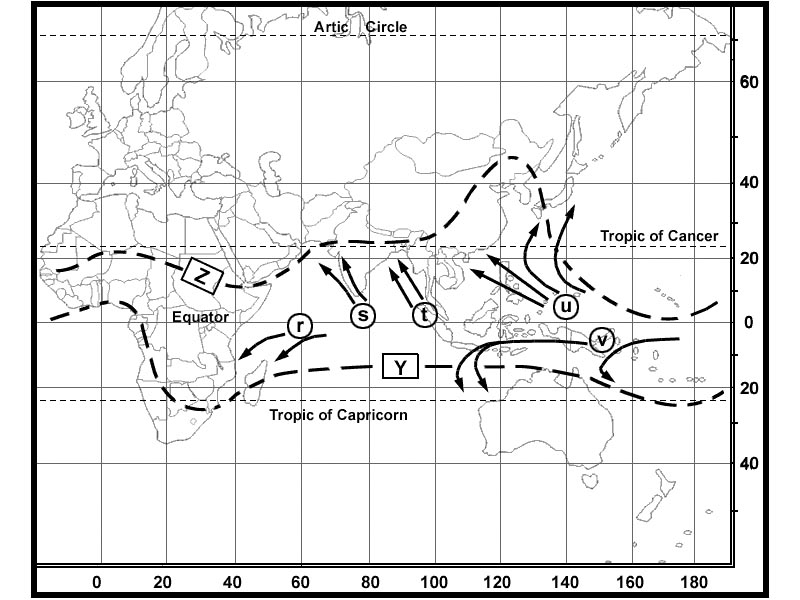 Has a positive arm and therefore generates a positive moment.
Has a positive arm and therefore generates a positive moment. A load placed forward of the datum ?
Question 70-40 : Has a negative arm and therefore generates a negative moment has a negative arm and therefore generates a negative mass and moment has a positive arm and therefore generates a positive mass and moment has a positive arm and therefore generates a positive moment
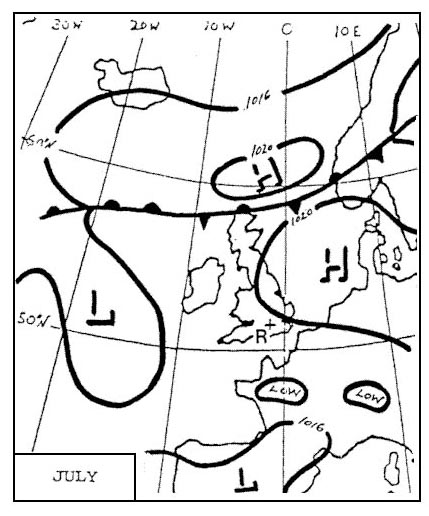 Has a negative arm and therefore generates a negative moment.
Has a negative arm and therefore generates a negative moment. ~
Exclusive rights reserved. Reproduction prohibited under penalty of prosecution.
2759 Free Training Exam
